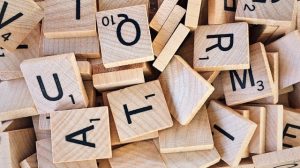Board games have been played in virtually all social cultures. Games can be determined by a plan, chance, or a mixture of both, and often have a goal that players try to achieve before their opponent. Considering that the United States has gradually moved into urban life since the 19th century, the middle class had much more free time and a significant increase in income. The American home then became the epicenter of entertainment. Young children were encouraged to play board games such as wordfeud, which contributed to literacy and provided ethical guidance. Many objects are considered obsolete, regardless of how they are played today.
Scrabble

The goal of the game was to bring together personalities, build words, collect as many words as possible and outperform the other players. The game encouraged many repetitive players to improve their language skills and complete their literary skills. But it gave my loved ones and friends many hours of fun and greatly enhanced our spelling and vocabulary.
Dominion
You play the monarch, which is the only beginning of a small benevolent kingdom. You must immediately get as much as possible from the surrounding unclaimed property. You likely use the lackeys, build your castle, the best to protect yourself, to overcome it. The game starts with each opponent player who has the same set of ten cards in his hand. From the beginning of the game, a pair of ten cards with exceptional actions is selected from the 25 groups of junk. The principles outline some options such as theatre, or you can design your project. Each participant starts with the same cards on equal terms. The best thing about the Domain game is that each game is limited to about 30-40 minutes.
Ticket to Ride
There are thirty-six cities, each connected by some railways. Players can choose to lose between these two cards, but they must keep at least some of them. The railway cards are then shuffled, and four cards are dealt with each opposing player. The remaining cards are shuffled and placed on the board, then five of them are turned around and placed face up with the deck of cards. The player who has crossed the field leaves, then the action continues clockwise around the table.
